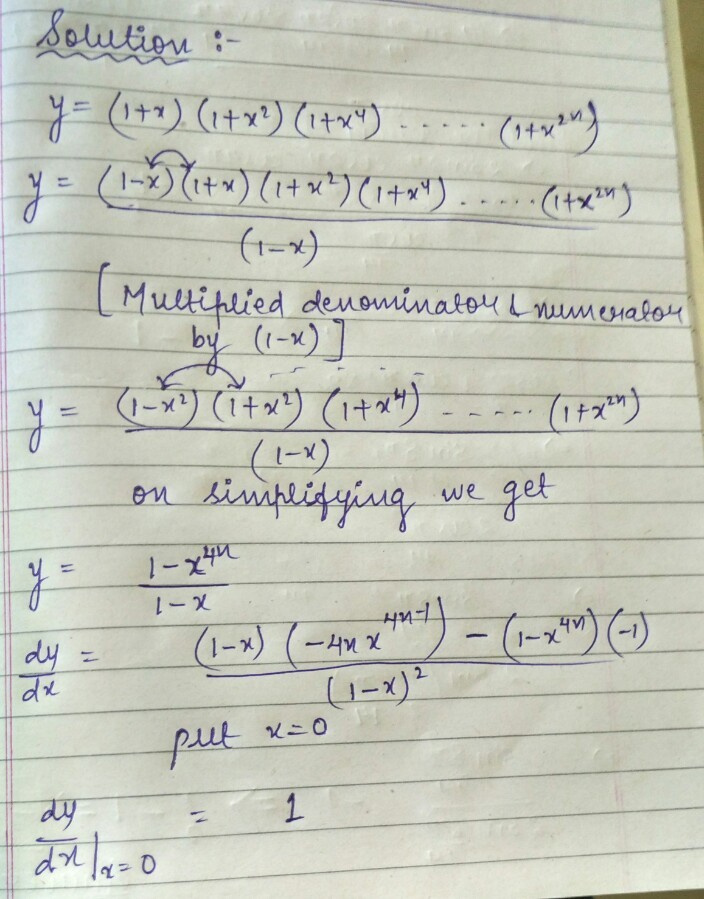Differentiating for fun!
If y = ( 1 + x ) ( 1 + x 2 ) ( 1 + x 4 ) . . . ( 1 + x 2 n ) , then d x d y at x = 0 is:
The answer is 1.
This section requires Javascript.
You are seeing this because something didn't load right. We suggest you, (a) try
refreshing the page, (b) enabling javascript if it is disabled on your browser and,
finally, (c)
loading the
non-javascript version of this page
. We're sorry about the hassle.
4 solutions

how did u get dy/dx
The expansion of y is equal to 1 + x + x 2 + x 3 . . . + x 2 n . The derivative of such equation is 1 + 2 x + 3 x 2 + . . . 2 n x 2 n − 1 . Well, what matters though is just the first few terms (as we know that the succeeding terms just would be zero anyway). Then it will be clear that the answer is 1.
The expansion of y must be 1 + x + x 2 + x 3 + … + x 2 n + 1 − 1 .
X=0. Therefore (1+0)(1+0²)... Still equals 1(1)=1 Therefore y=1. Don't make things so complicated.
When differentiating using the product rule, the result is a sum of all possible y's with one differentiated factor. Because all terms except that where (1+x) is differentiated have a factor of 0 at x=0 and the term where (1+x) is differentiated is equal to 1, the answer is 1.